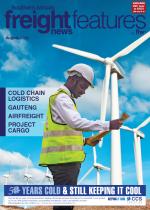Using technology, exporters can move larger volumes of fresh or refrigerated products in good condition, regardless of how long the transit times are.According to Casandra Barnes, CEO of CLCircular South Africa, there are many challenges facing the South African export market. The most common are poor communication between the stakeholders in the logistics chain and delayed transit times. But in the face of increased digitalisation, automation and optimisation of operations using effective data analysis, there are far more opportunities going forward.“We bring real-time visibility to all types of products at the best price in the market,” she told Freight News. “All kinds of exporters, importers, retailers or logistics operators working with food, medicines or perishable assets can be assisted knowing at all times the whereabouts and environmental conditions of their products.”For Barnes, every problem or difficulty is an opportunity. “It is up to us, the technology companies, to find the best solution to these challenges. At CLCircular, we have managed to provide a simple and cost-effective alternative to many of the difficulties faced by the cold chain. “By listening to our customers’ needs and constantly upgrading our systems according to their requirements to assist with an ever-changing and challenging logistics environment, we can deliver solutions that allow for more products to be moved more efficiently.”The company has implemented a unique algorithm, whereby it can supply carbon footprint reporting on the sea-freight logistics leg of the cold chain trip. “The purpose is to provide an estimate of the impact of moving goods, help improve processes, sell more, comply with environmental regulations, make better decisions, and help give visibility to CSR (corporate social responsibility) actions,” explained Barnes.Regarding logistics, CLCircular’s principal development is its circular logistics business model, whereby the company provides businesses with access to its devices at a sustainable and affordable price for them.“Ultimately, this serves to reduce food waste by monitoring temperatures during transit, and we’re re-using our devices to minimise environmental impact,” said Barnes, indicating that companies were increasingly concerned about delivering their products in the best-quality state possible. “These days, there is more capacity to move fresh or refrigerated products in proper ways than there was 10 years ago. This enables larger volumes of product to be exported in good condition, given the longer transit times at present.”Barnes expressed optimism about the outlook for the cold chain sector, saying the industry was moving forward and making progress in its shift from a model of “repair and replace” to one of “predict and prevent”. “That’s the path. We need to provide a sustainable method of transit from farm or factory to destination port using accurate data collection in order to allow for pre-emptive decision-mak ing.”

